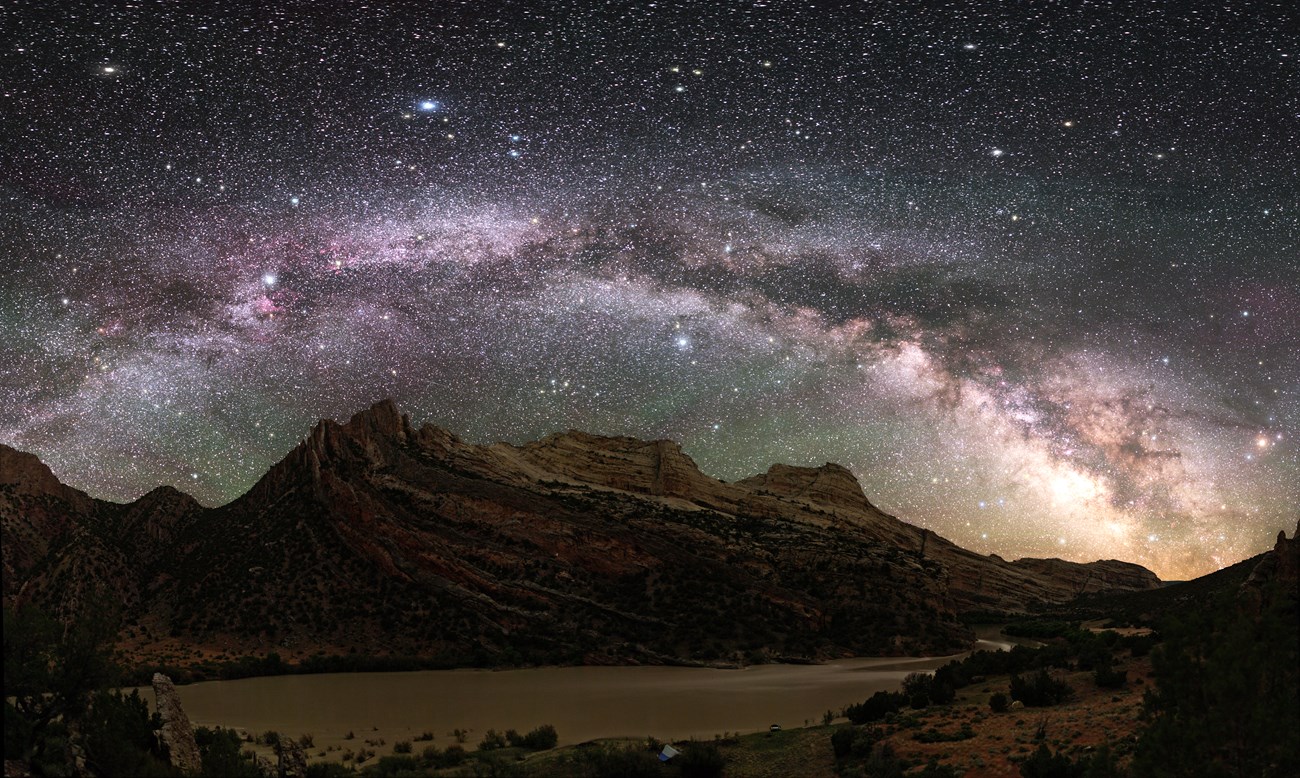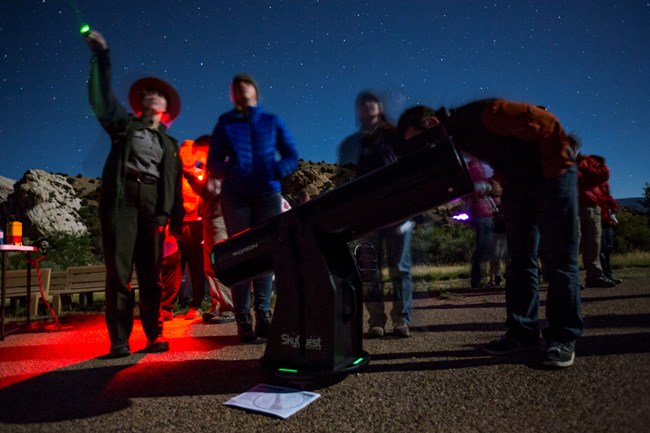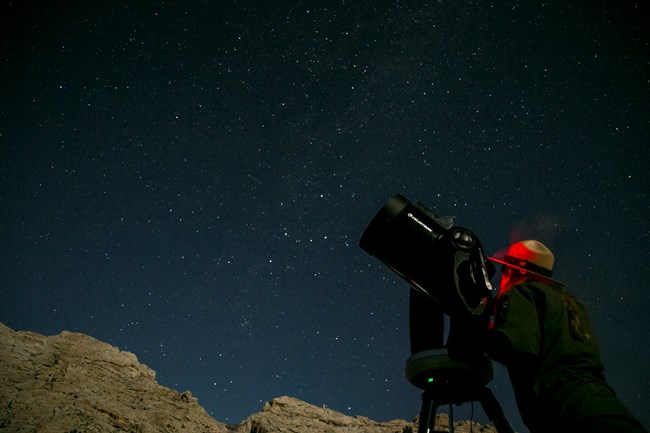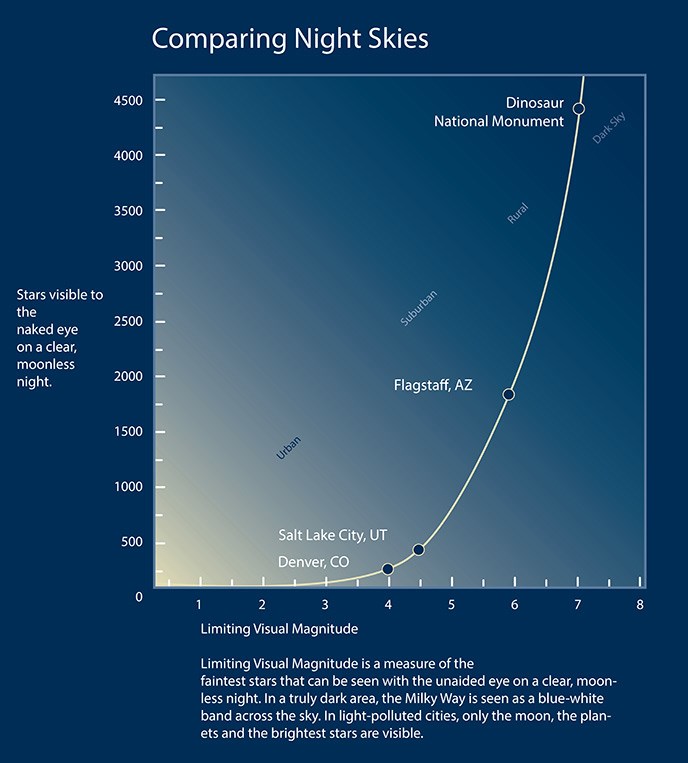
NPS / Dan Duriscoe Dinosaur National Monument is one of the darkest places remaining in the United States. Because there is little light pollution here, you can see the stars of our Milky Way galaxy with startling clarity. Night skies are a vanishing resource and increasing development, even in many rural areas, expands the impact of light pollution. However, night sky resources can be quickly restored with the installation of appropriate lighting, which directs light onto the ground where it's needed rather than up into the sky. 
NPS / Jake Holgerson Stargazing Tips1. Find a dark sky! Dinosaur National Monument is an ideal place to stargaze because light pollution is generally much more scarce out here than it is in larger cities and towns. In fact, there are many dark sky national parks and monuments that are excellent places to stargaze.2. Check the weather and sky clarity before you go. There's not much point to stargazing on a cloudy evening. Moon phase and air quality can also impact your viewing experience. If the Moon is in a gibbous phase (more full than crescent-shaped), it's light may outshine the light of fainter stars and deep sky objects, like galaxies, making them hard to see. 3. Give your eyes 30 minutes to adjust to the darkness. Once our eyes are exposed to darkness, they begin making a chemical called rhodopsin. This chemical helps your eyes to take in more light when light is limited. However, this process starts over each time you look at a bright object, such a streetlight, phone screen, tablet, or even the Moon. To ensure your eyes will see as much as possible, avoid bright lights when stargazing. 4. Use red lights. The visible light spectrum includes all the colors of the rainbow, with warmer colors (red, orange, and yellow) on one end, and colder colors (green, blue, and violet) on the other end. Warm colors have long wavelengths, and are much gentler on dark-adapted eyes than cold-coldered lights. Red light has the longest wavelength of all the colors, and is the most gentle on dark-adapted eyes. Using a red-light headlamp or covering your flashlight with a red film can help you see where you're going in the dark without messing up your eyes' natural night-vision (described in tip #5). 5. Try out stargazing aids. While naked-eye stargazing is super fun, using tools like binoculars or a telescope can help you see objects the eyes can't detect, like the moons of other planets. Doing a little bit of research before you go, or printing a monthly star chart, can help you know what to look for at different times of the year. There are also many stargazing apps available, too. If you download one, look for a "red mode" in the settings to turn the screen red and preserve your night-adapted vision. 
NPS / Jake Holgerson Stargazing ProgramsMuch of Dinosaur National Monument provides prime places to view the night sky with either the naked eye or through the use of telescopes and binoculars. The monument has a designated spot for stargazing in the Split Mountain Campground. In the summer, rangers hold stargazing programs at the back of the Split Mountain Campground. Check the Calendar for upcoming programs.
Spot the International Space StationWhile you are enjoying Dinosaur's dark night skies, you may get a chance to see the International Space Station. |
Last updated: October 18, 2022
